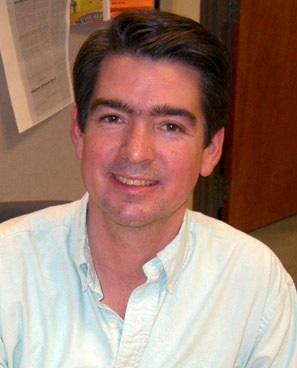
Abstract
Multijunction solar cells are the first photovoltaic technology to surpass single-junction Shockley-Queisser theoretical efficiency limits, and represent the highest efficiency of any solar cell technology. Recent experimental results on high-efficiency solar cells with 3-, 4-, and 5- junctions will be presented. Many challenges remain to develop new semiconductors with lower rates of carrier recombination at the bandgaps needed to push toward still higher efficiencies. Semiconductor materials that are inherently tolerant to recombination at grain boundaries and other defects are particularly intriguing as they hold the promise to allow low-cost growth methods for flat-plate multijunction cells.
Work to identify unifying trends among defects in widely differing types of semiconductors and to identify the fundamental principles that result inremarkably low minority-carrier recombination activity at defects in some types of semiconductor materials will be discussed in the talk. Earlier observations – for example, that electronic states of hydrogen in III-V and II-VI semiconductors are nearly constant with respect to the vacuum level, and that some defect energy levels in chalcopyrite I-III-VI semiconductors show a strong similarity with respect to the vacuum level even for materials with widely varying bandgap – reveal a profound, unifying aspect of the fundamental nature of these materials that influences recombination at surface and bulk defects. Research findings here may be extendable to other families of semiconductors as well, including II-VI semiconductors, to kesterite semiconductors such as Cu2ZnSn(S,Se)4, and to newer compounds such as perovskite CH3NH3PbX3 (where X = Cl, Br, I) semiconductors which are showing promise for thin-film solar cells. Onesun multijunction cells made from such materials could have much higher efficiency than their single-junction counterparts, and would have a game changing effect on the economics of solar electricity.
Biography
Richard R. King received his Ph.D. and M.S. in electrical engineering from Stanford University, and his B.S. degree in physics, also from Stanford. Dr. King is Principal Scientist and Technical Fellow responsible for Photovoltaic Cell R&D at Spectrolab, Inc. His research on photovoltaics over the last 25 years has explored metamorphic III-V materials, dilute nitride GaInNAs(Sb), ordered and disordered (Al)GaInP, characterization of defects and recombination in these materials, high-transparency tunnel junctions, and integration into high-efficiency multijunction solar cells with 3 to 6 junctions. In 2006, this work led to the first solar cell of any type to reach over 40% efficiency. Dr. King is the recipient of the 2010 William R. Cherry Award given by the IEEE for "outstanding contributions to photovoltaic science and technology." He is a strong supporter of photovoltaics education, and is a co-founding editor of the Journal of Photovoltaics. In 2014, Dr. King will serve as general chair for the 40th IEEE Photovoltaic Specialists Conference.